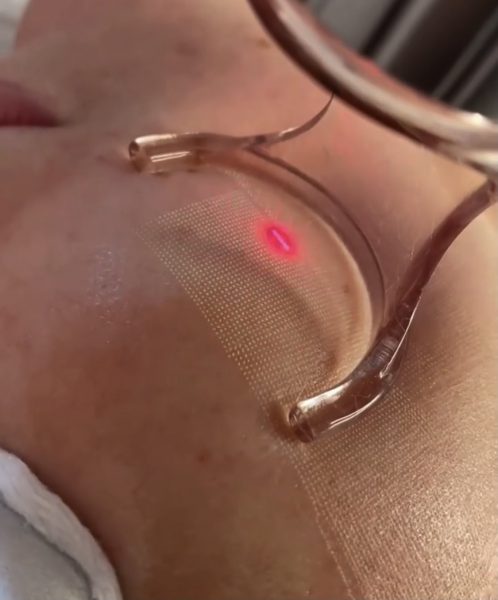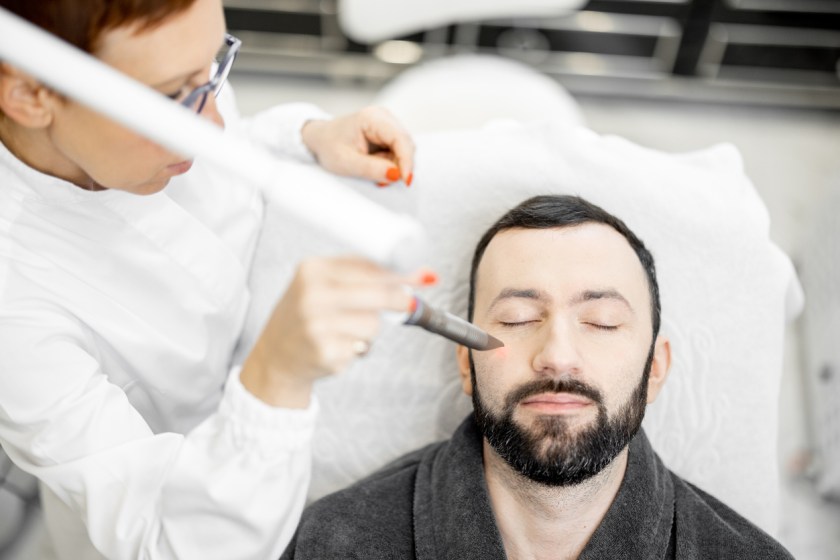Advancements in treatment technology and changing opinions on investing in your appearance has brought with it a changing idea of what downtime really means.
Samantha’s blazing red complexion in that infamous Sex And The City scene is the perfect example of what downtime used to represent. Most people who wanted treatments that actually made an impact on their skin quality would book their appointment knowing they’d have to avoid being seen for a few days, or be faced with some questioning looks.
But as new treatments hit the clinics, the idea of the ‘lunch break’ procedure came to light. This brought the expectation you can visit your local clinic during lunch for skin rejuvenation and return to the office with your co-workers none the wiser. Of course, in some patients’ experience, these treatments don’t deliver on their promise of no downtime because every individual has their own definition of what that really means.
So, understanding each individual’s take becomes an important part of determining a treatment plan. And it will go a long way in avoiding confusion and disappointment in the days after clinic visits.
An expert’s opinion
Zecca Cosmedical in Sydney’s Alexandria offer a variety of non-surgical medical skin treatments. From laser treatments like Clear + Brilliant, Laser Genesis, Fraxel and Excel V to Dermapen, IPL, chemical peels and injectable treatments; it’s safe to say the conversation around downtime is one they have often, and it’s always a little different.

Ann Pilley is a registered nurse with more than 30 years of experience. She’s also a Co-Founder and Director of Zecca Cosmedical. She believes discussing downtime is one of the first steps of any client interaction, and there are a few key ways to break it down so everyone’s on the same page, including a very no-nonsense approach.
“When we consult with a client and our discussion is around skin rejuvenation, one of the first questions we ask is if they have any downtime as this will determine the treatments we may perform.
“Downtime means different things to different people and is used liberally in our industry. Historically it meant the time that the client was down due to clinical wound healing and swelling, otherwise known as clinical downtime. As devices and procedures progressed from the fully ablative (affecting 100% of skin) to fractionation technology (removing a fraction of your skin), a new term was created to qualify the type of downtime: social downtime.
Today, downtime is broken into two groups: Clinical vs Social Downtime
“Clinical downtime, which is what most of us think of when we think of downtime, involves some sort of non-functional period, or when applied to a cosmetic setting, a period that requires wound healing.”
According to Ann, Fraxel lasers, Photodynamic therapy and medium depth peels all require downtime for various reasons.

“With Photodynamic therapy, you can’t go out in the direct sunlight as it will activate the drug in your cells and cause an uncontrolled treatment. It’s not dangerous but healing time becomes longer. Fraxel lasers and medium-depth peels require downtime because you look like Freddy Kruger (swollen, bloody, scabs). You need time for wound healing. One of the major roles of our skin is as a barrier for infection. Once this barrier is disrupted through skin treatments, we need to be mindful of infection.”
Social downtime is far less intense, but often where the most confusion amongst patients is caused. While it’s safe for patients to be out and about, they may choose to avoid social settings for cosmetic reasons, and that’s where everyone’s opinion will be different.
“Skin needling, peels, Clear + Brilliant, injectables and some pigment treatments may require some social downtime. This downtime is due to redness, some swelling and peeling or dark brown spots that need some healing. But, if you don’t care about the questions and looks then you can go about your normal business,” explains Ann.
Having the conversation
Asking questions will be the first step in determining what downtime means to your patient and discussing every possible outcome, whether it’s simply slight redness in the days after treatment, will allow you to advise an appropriate treatment plan. Ann suggests being blunt is the best way forward.
“Downtime is difficult to explain to people. So, I opt for the straightforward approach like “you will look like you have been dragged behind a bus”. I think this paints a very visual picture but surprisingly, some people will still say you didn’t tell me it would be this bad.
“We also show photos of the recovery process from clients who have agreed to share their images. I’ll often show the extreme recovery clients because there is nothing worse than your client begin unprepared.”
As treatment options evolve, how do your discussions around downtime with your clients and patients change?
DID YOU KNOW
There are 5 ways you can catch up with SPA+CLINIC?
- Our quarterly print magazine, delivered to your door. Subscribe here.
- Our website, which is updated daily with its own completely unique content and breaking news.
- Our weekly newsletter – free to your inbox! Subscribe here.
- Our digital magazine – click here to view previous issues.
- Our social media – see daily updates on our Instagram, Facebook & Linkedin





